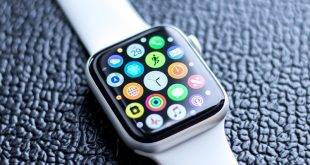As usually the case, Apple is keeping quiet about its upcoming flagship phone release. We’ve seen the same type of silence before the launch of 2014’s iPhone 6 and 6 Plus, and before the launch of previous models. Most insider suggests that once again, Apple will aim for an improved version of its latest model this year, building the iPhone 6S and iPhone 6S Plus, instead of jumping straight to the iPhone 7, which is most likely going to reveal itself as late as fall 2016. The Cupertino-based company hasn’t revealed what its primary focus will be with the S models, but one thing seems almost certain: we’ll be seeing a major change in what RAM the new iPhones will be using.
The current models of the iPhone 6 are using 1 GB of LPDDR3 RAM, but according to Asian insider sources at TechNews, Apple is already invested in manufacturing LPDDR4 RAM for its upcoming phones. Whatever the next models will be called, they will be using 2 GB of LPDDR4 RAM. The difference between 1 GB and 2 GB of RAM are usually neglect-able in smartphones, but given that DDR4 provides twice the bandwidth of current-gen DDR3, the difference is colossal in this case. At least on paper, 2 GB of LPDDR4, if used to the max, would provide 4 times the bandwidth of the current 1 GB of LPDDR3 found in the iPhone 6 and 6 Plus. Unfortunately, manufacturing costs for DDR4 are still high, so including newer and more RAM into its iPhone 6S phones will likely force (and give reasons to) the tech giant to ask a steep price once again. No, we’re unlikely to see a newer version of the iPhone 5C.
This raises the question: why would the iPhone 6S (or 6S Plus) require that much computing and processing power? It’s not like the current Android-flagships are making use of 3 or 4 GB of RAM, at least not fully. The answer seems to point to a more demanding iOS 9. Apple has always launched its operating systems in a similar fashion with Microsoft – versions that bring radical changes and improvements, and versions that mostly do tweaking and quality of life improvements. This is evidently the case with iOS 7, an OS that brought a completely fresh design and was considered a major shift, while iOS 8 is more or less a tweak version that brought only some new features (such as ApplePay). Put together, these signs suggest that iOS 9 might be resource-hungry. One one side, this means that we’ll be seeing some considerably improvements (that might impress users enough to get more iPhone 6S’ off the shelves), but which also hints at a lack of backwards compatibility, meaning that iOS 9 might just be too hungry for older iPhone models, forcing users to upgrade to the new LPDDR4 RAM iPhone 6S or 6S Plus.
As always with rumors from insider sources, we need to take things with a grain of salt. Still, these are reliable sources and do paint a picture that is all too familiar. Whatever the new iPhones will be called (whether it’s iPhone 6S or iPhone 7), it’s clear that they will focus on better performance and better interaction with Apple’s own software, which will most likely bring major improvements at steep hardware costs.
 Load the Game Video Games, Reviews, Game News, Game Reviews & Game Video Trailers
Load the Game Video Games, Reviews, Game News, Game Reviews & Game Video Trailers



